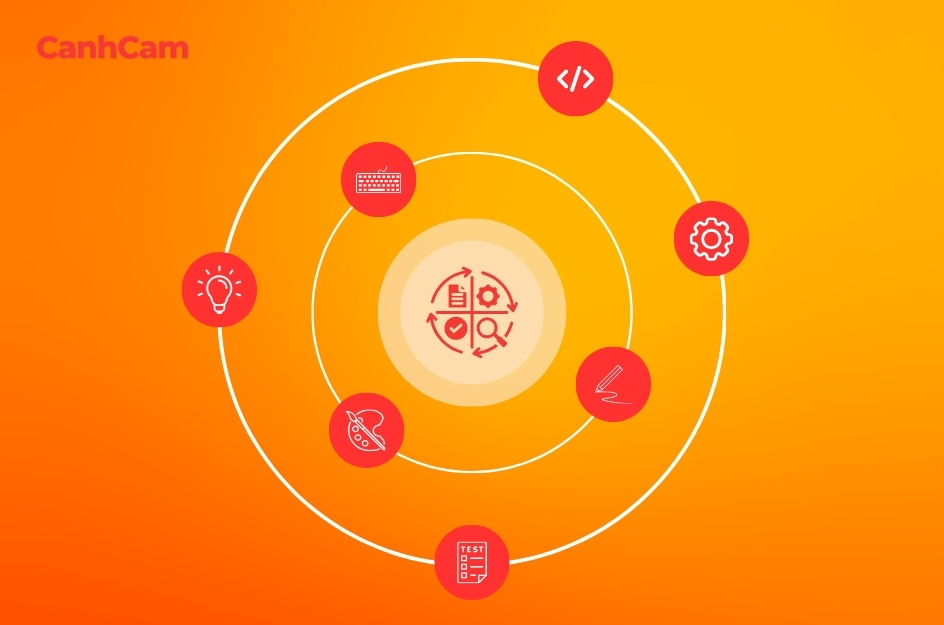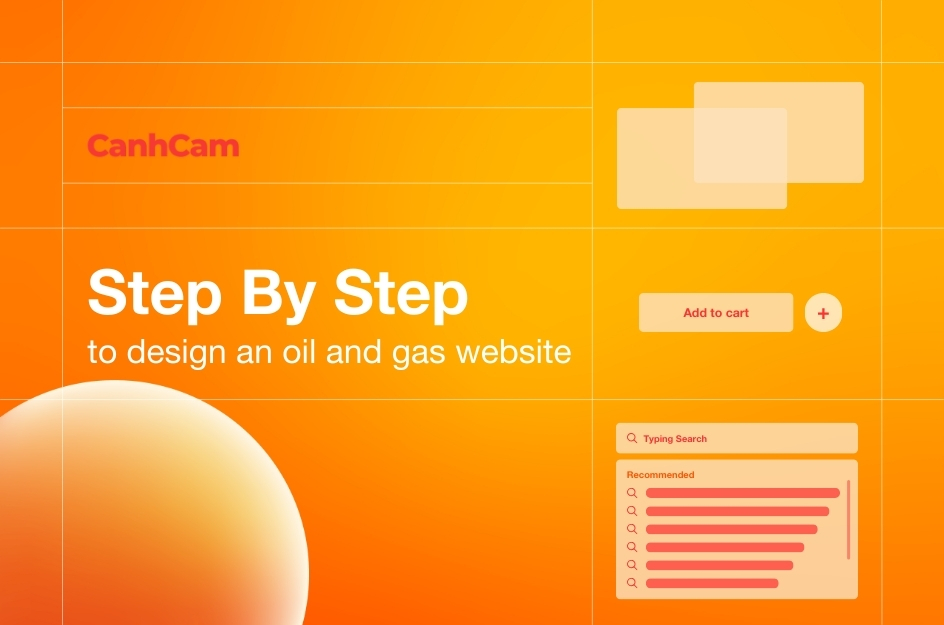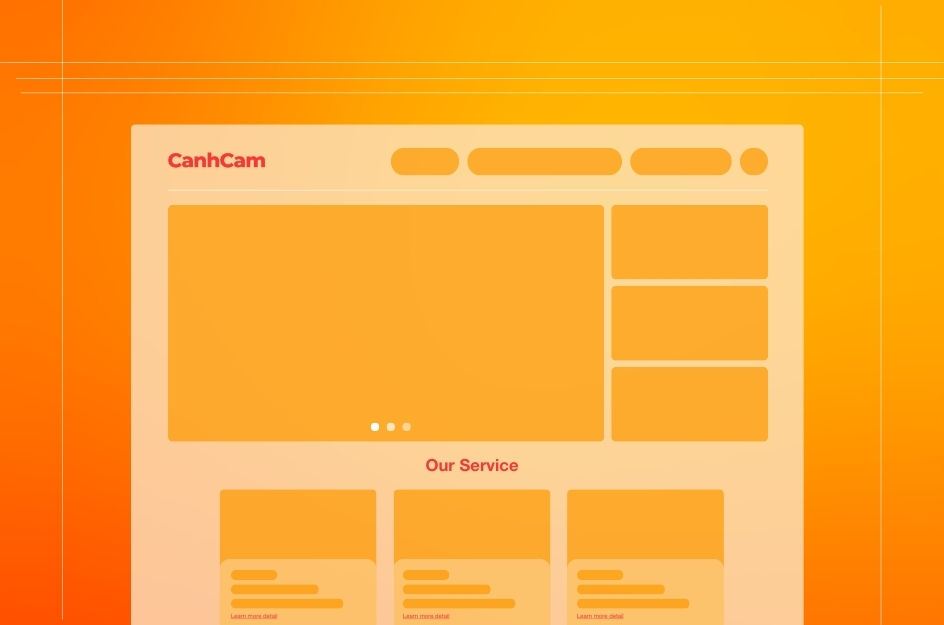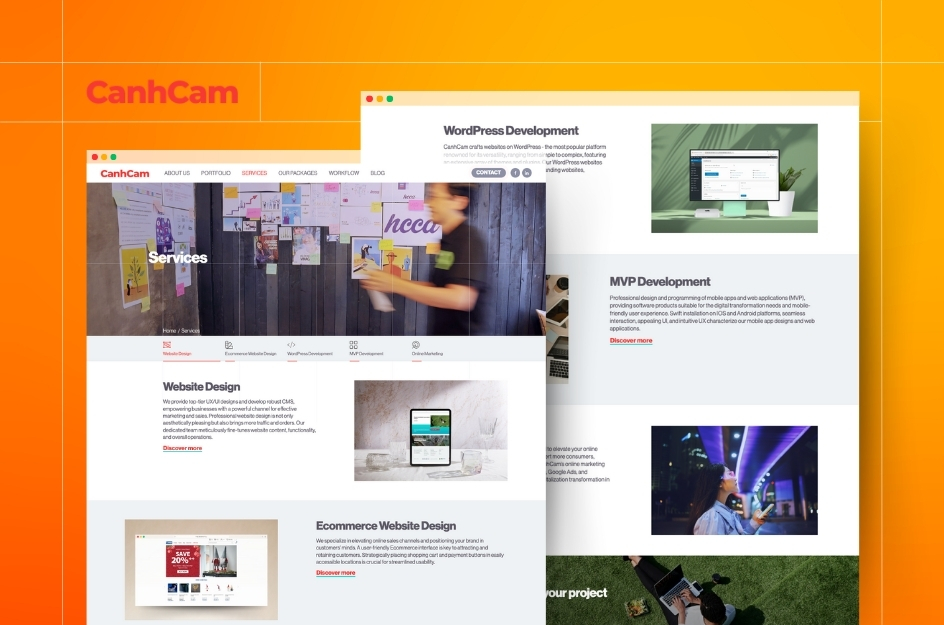Professional and eye-catching oil and gas website design will help your business become more competitive in today's online market. Today, we specialize in creating modern, user-friendly websites specifically tailored for Australian oil and gas companies.
Here's what apart in our article:
- We understand the industry: We know the importance of showcasing your services, safety procedures, and commitment to sustainability.
- Mobile-first approach: With more Australians browsing online on their phones, having a mobile-friendly website is crucial.
- Local SEO boost: We'll help potential clients find you by targeting relevant keywords and building a local online presence.
Let's learn how to develop the most comprehensive and impressive oil and gas website with CanhCam!

What is an oil and gas website?
An oil and gas website is a vital online presence for companies in this industry. It functions as a multifaceted tool that achieves several key objectives:
- Credibility & Brand Image: A professional oil and gas website with a clear and user-friendly design instils trust and portrays a competent image to potential clients, partners, and investors. This can be crucial for securing new business opportunities and attracting skilled personnel.
- Information Hub: The website serves as a central and easily accessible source of information for various audiences. It can house industry news, updates on the company's projects and services, and educational content relevant to the oil and gas sector. This allows visitors to stay informed about the company's activities and offerings.
- User Experience: A well-designed website prioritizes user experience. This means it should be easy to navigate, with a clear and intuitive layout. Fast loading times are essential, ensuring visitors don't abandon the site due to slow performance.
- Engagement & Lead Generation: An oil and gas website shouldn't be static. By incorporating interactive features, such as contact forms, downloadable brochures, or even video content showcasing projects, the website can keep visitors engaged and encourage them to explore further. This can ultimately lead to generating qualified leads and converting them into customers.
- Search Engine Optimization (SEO): A well-structured website that uses relevant keywords and industry terminology can improve its ranking in search engine results pages (SERPs). This increases the website's visibility and drives organic traffic from potential customers searching for oil and gas-related services.
Visit our services: Creative Website Design Melbourne
The Designing Process for an Oil and Gas Website
Step 1: Setting Goals & Target Audience
To design an oil and gas website, you must first gather vital and relevant information. The information needs to address questions, including:
- Goal Setting: Before diving into design, clearly define your website's objectives. Do you aim to attract new clients, educate potential investors, or showcase your industry expertise? Understanding your goals will guide the website's overall direction and content.
- Market Research: Gain valuable insights by researching the current online oil and gas market. Analyze your competitors' websites, identify industry trends, and stay updated on the latest web design practices.
- Target Audience: Who are you trying to connect with? Investors seeking opportunities? Potential clients looking for specific services? Understanding your target audience helps tailor the website's content and user experience to resonate with their needs and expectations.
Step 2: Develop a Website Design Strategy
- Information Architecture: Organize the information gathered from step 1 to create a clear and logical website structure. This includes defining user navigation menus, content hierarchy, and page layouts for optimal user experience.
- Content & Functionality: Identify the functionalities, tools, and content types that will be most valuable to your target audience. Consider features like contact forms, downloadable brochures, project portfolios, or industry news sections to keep visitors engaged and informed.
Step 3: Design an oil and gas website
- Target-Driven Design: The website's visual style should be crafted with your target audience in mind. For example, a website targeting investors might prioritize a sleek, professional look, while a site aimed at potential clients in the drilling sector might benefit from a more robust and functional design.
- Brand Consistency: Ensure the website's colour scheme aligns with your company logo and branding for a cohesive and recognizable online presence.
- Design Exploration: Collaborate with your web design team to explore different design options. This allows you to compare and select the most suitable design that effectively communicates your brand message.
Step 4: Check and edit
Before launching your website, conduct comprehensive testing to identify and resolve any functionality issues or bugs. This includes testing website responsiveness across different devices (desktops, tablets, mobiles) to guarantee a seamless user experience for all visitors.
Step 5: Maintain the website
Most web design agencies offer website maintenance plans. These plans ensure your website's ongoing security, performance optimization, and timely updates to address any technical issues that may arise after launch.
Steps to Design an Oil and Gas Website

Step 1: Define Your Website's Goals
Clearly define what you want visitors to achieve on your site. Is it to learn about your company's history and expertise, explore the oil and gas services you offer, or contact you directly for a project? Understanding your goals will guide the overall website structure and content strategy.
Step 2: Plan Your Website Content
Build Trust and Credibility - every oil and gas website needs key sections to establish trust and showcase your company's expertise in the industry.
- About Us: Craft a compelling story about your company, highlighting your mission, values, and team's experience.
- Services: Clearly explain the oil and gas services you offer, detailing the specific solutions you provide to your clients.
- Call to Action (CTA): Make it easy for visitors to take the next step, whether it's contacting you for a consultation, requesting a quote, or downloading a helpful resource. Use strong CTAs with clear instructions throughout your website.
- Testimonials: Showcase positive client experiences and testimonials to build trust and social proof. Potential clients are more likely to do business with a company they feel they can trust.
Step 3: Choose a Website Design Partner
- Industry Expertise Matters: Look for a professional web design company with a proven track record in the oil and gas industry. Their experience ensures they understand the specific needs and target audience of your business.
- Verify Credentials: Before choosing a partner, verify their contact information, portfolio of past projects, and client testimonials. This will help you assess their design capabilities, communication style, and ability to deliver a website that meets your goals.
Step 4: Select a Hosting Provider
- Reliable Foundation: Your website needs a reliable hosting service to be accessible online 24/7. A good hosting provider ensures your website loads quickly and functions smoothly for all visitors.
- Options for Hosting: You can choose a hosting plan offered by your chosen web design company or select a separate hosting provider based on your budget and technical needs. Research different providers to find one that offers the features and security you require.
Step 5: Register a Domain Name
This is your website's address on the internet. Choose a domain name that's easy to remember, and spell, and reflects your brand or the services you offer. A relevant domain name can also improve your website's search engine ranking.
Step 6: Develop Compelling Website Content
Include informative and engaging content about your services, products, and industry insights. Go beyond just listing services - explain how your solutions address specific challenges faced by oil and gas companies. Consider including helpful articles, case studies, and white papers to establish your company as a thought leader in the industry.
Reasons You Should Design an Oil and Gas Website

- Create an online presence to boost your chances of connecting with potential customers
- Help introduce products to customers in an intuitive, highly interactive way.
- A website is an effective tool for carrying out PR and marketing campaigns, opening up many opportunities to sell professional goods without extensive expenses
- The website also has features such as collecting customer information conducting surveys, and offering 24/7 customer support, thereby improving the quality of its services.
- Increase competitiveness with other competitors in the online business market.
Things to consider when designing an oil and gas website
UX-UI design
- The website's interface adheres to a uniform concept, with consistent fonts and layout.
- The loading speed is less than 3 second
- The website has links, for example, articles need to refer to products and services.
- Use a simple, clean, and easy-to-use layout to help customers find information quickly and easily
- In an oil and gas website, important and attractive information should be placed at the top of the page and less important content should gradually move down.
- Create contrast to highlight important subjects. For instance, placing black lettering on a white background.
- Separate and align content appropriately, and avoid using too many different fonts on the website
- If the page is long, it needs to be divided into smaller pages.
- Do not use fonts smaller than 12pt as it will make it difficult for readers.
Link integration
- When creating a link, you need to provide information to customers about where the link will take them
- Use the same colour to create uniformity for links.
- Should not link to pages under construction.
- Optimizing images on the web helps speed up web browsing. Images must be in .jpg or .gif format
- Use thumbnails for large images.
User interaction
- Create web pages that respond to user interaction with the website
- Add items to gather user information and feedback.
- Design a news page to provide updates on new information to announce fresh information.
CanhCam - Professional Oil and Gas Website Design

CanhCam is confident in providing professional oil and gas website design & development.
CanhCam is confident in providing a professional and impressive oil and gas website, tailored to business needs. Here are advantages when you choose our service:
- CanhCam’team of leading experts will enthusiastically assist you during the design process
- Build a professional web design process, optimizing customers' costs and time.
- Optimal security system, ensuring customer data is safe
- Many essential tools are integrated and are constantly updated.
- Support customers in creating marketing content, building web strategies, supporting branding, communication, etc.

